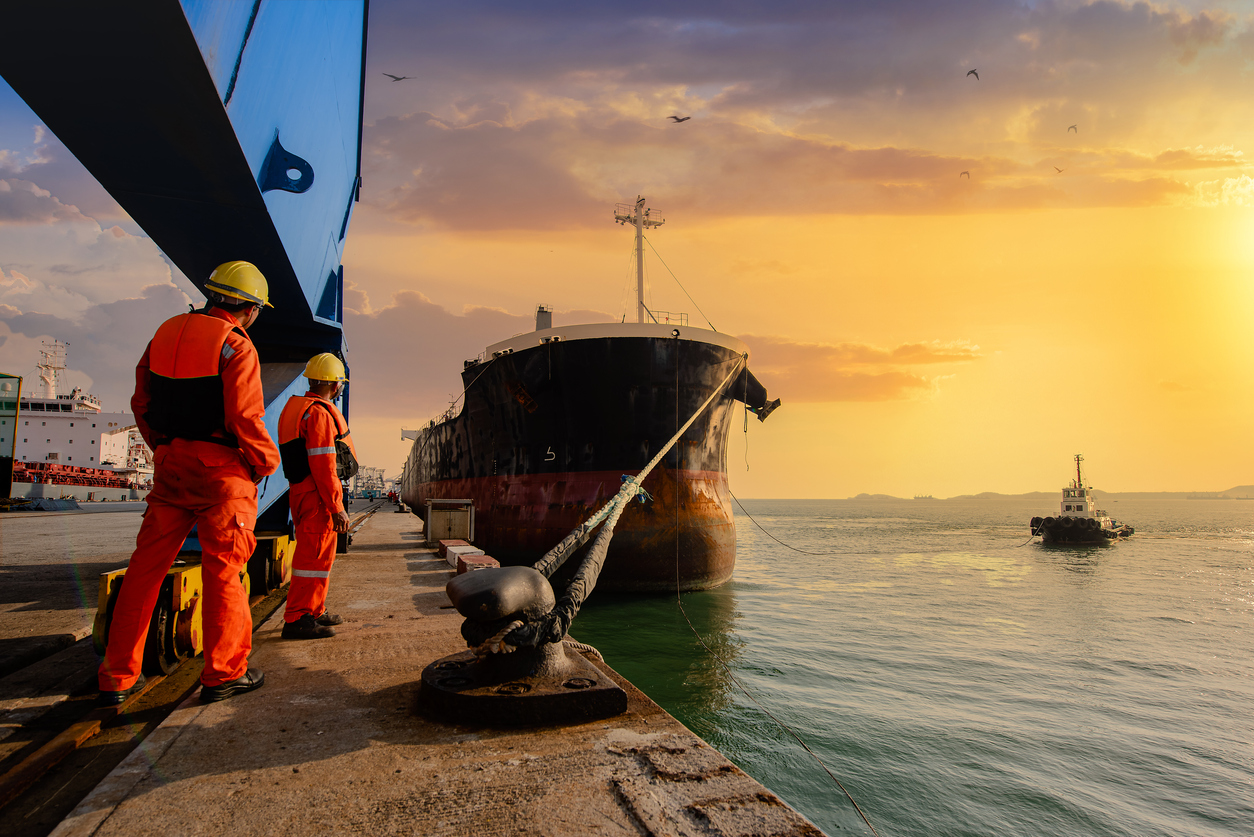
Top Mooring Methods for Cargo Ships
December 8, 2020
Cargo ships are perhaps the largest driver of global economies. By transporting millions of tons of cargo between producers and end users each year, these critical transportation components are invaluable. Protecting that cargo – as well as the shipping vessels themselves – requires a comprehensive risk management program. Commercial marine insurance is the foundation of risk management for the shipping industry, as are safety-oriented practices and procedures. Mooring a vessel safely and effectively can spell the difference between ships and cargo being delivered safely and the potential damage or loss of vital assets. In this guide, we will explore some of the top mooring methods for commercial ships.
Mooring Dockside or at Sea
Commercial cargo vessels are designed with specific mooring arrangements, allowing the ship to remain stationary while loading or unloading cargo. Mooring may take place at a land-based dock or port facility or jetty. Larger vessels may not be able to berth at a port, necessitating the use of a floating platform or sea berth. Ships may even be moored to one another or may temporarily be stationed at a mooring buoy offshore. During mooring, vessels may be subject to tidal swells, wave activity or wakes from passing ships, and winds. These forces may vary with currents, requiring the use of multiple mooring lines or wires to safely secure the vessel.
No matter the type of mooring, it must be done safely and effectively. Commercial marine insurance protects against many incidents of property damage or loss, but it is imperative that mariners supplement these protections by taking precautionary measures while conducting mooring operations.
Common Mooring Methods
The variability of mooring conditions and locations is only compounded by the different types and sizes of vessels that may require mooring. Despite the wide range of possibilities, common mooring strategies can be distilled down into several major options:
Single-point mooring – the vessel is affixed to a mooring buoy using a single line, allowing it to remain in constant position with respect to the buoy but able to pivot with wind and sea conditions. In many cases, a tug vessel is positioned at the stern of the cargo vessel to help maintain distance from the buoy. This mooring technique is reserved for calm seas and light winds; heavier conditions make this method unsafe.
Multi-buoy mooring – in this mooring method, the ship is affixed at the stern to two or more buoys, and the bow is secured using one or both anchors. By using the ship’s engines to maneuver, the vessel is positioned evenly between buoys. This method is more secure than single-point mooring and can be used when sea and wind conditions are unfavorable.
Mediterranean mooring – using both bow anchors in sequence as a vessel approaches a floating platform or sea berth, the ship pivots toward the mooring structure. Once it is positioned alongside, stern lines are then attached. Finally, slack is taken up from the anchor chains or cables, firmly locking the vessel into place and facilitating cargo loading and unloading operations.
Standing mooring – in cross winds, ships may be difficult to position. Standing mooring is called for; this method uses the port anchor to begin the process. Then, the starboard anchor is dropped, and the port anchor’s slack is relieved at the same time. Stern lines may be used to secure the vessel to minimize sway.
Running mooring — like Mediterranean mooring, anchors and lines are used to position the vessel. In this method, the starboard anchor is dropped, pivoting the vessel sternward to the mooring structure, such as a sea berth or platform. The port anchor is then dropped as slack is taken up on the starboard side. This method reduces the amount of room needed to secure the vessel, and it can be used in moderate to heavy seas.
These common mooring methods are only a few of the many options available to mariners. By using anchors, lines, and tug or support boats, large commercial cargo vessels may be secured to allow loading or unloading. As with commercial marine insurance, the proper mooring method for given conditions helps protect against risks, allowing cargo ships and their crew to operate safely.
About Merrimac Marine Insurance
At Merrimac Marine, we are dedicated to providing insurance for the marine industry to protect your clients’ business and assets. For more information about our products and programs, contact our specialists today at (800) 681-1998.
